S Lambert
An individual-based model to assess the spatial and individual heterogeneity of Brucella melitensis transmission in Alpine ibex
Lambert, S; Gilot-Fromont, E; Toïgo, C; Marchand, P; Petit, E; Garin-Bastuji, B; Gauthier, D; Gaillard, J-M; Rossi, S; Thébault, A
Authors
E Gilot-Fromont
C Toïgo
P Marchand
E Petit
B Garin-Bastuji
D Gauthier
J-M Gaillard
S Rossi
A Thébault
Abstract
Heterogeneity of infectious disease transmission can be generated by individual differences in the frequency of contacts with susceptible individuals, in the ability to transmit the infectious agent or in the duration of infection, and by spatial variation in the distribution, density or movements of hosts. Identifying spatial and individual heterogeneity can help improving management strategies to eradicate or mitigate infectious diseases, by targeting the individuals or areas that are responsible for most transmissions. Individual-based models allow quantifying the respective role of these sources of heterogeneity by integrating potential mechanisms that generate heterogeneity and then by tracking transmissions caused by each infected individual. In this study, we provide an individual-based model of endemic brucellosis Brucella melitensis transmission in the population of Alpine ibex (Capra ibex) of the Bargy massif (France) by taking advantage of detailed information available on ibex population dynamics, behaviour, and habitat use, and on epidemiological surveys. This host-pathogen system is expected to be subject of both individual and spatial heterogeneity. We first estimated the transmission probabilities, hitherto unknown, of the two main transmission routes of the infection (i.e., exposure to infectious births/abortions and venereal transmission). Then, we quantified heterogeneity at both individual and spatial levels. We found that both transmission routes are not negligible to explain the data, and that there is a high amount of heterogeneity of the host-pathogen system at the individual level, with females generating around 90 of the new cases of brucellosis infection. Males transmit infection at a lesser extent but still play a non-negligible role because they move between subpopulations and thereby create opportunities for spreading the infection spatially by venereal transmission. Two particular socio-spatial units are hotspots of transmission, and act as sources of transmission for the other units. These results may have important implications for disease management strategies.
Citation
Lambert, S., Gilot-Fromont, E., Toïgo, C., Marchand, P., Petit, E., Garin-Bastuji, B., Gauthier, D., Gaillard, J.-M., Rossi, S., & Thébault, A. (2020). An individual-based model to assess the spatial and individual heterogeneity of Brucella melitensis transmission in Alpine ibex. Ecological Modelling, 425, 109009. https://doi.org/10.1016/j.ecolmodel.2020.109009
| Journal Article Type | Article |
|---|---|
| Acceptance Date | Feb 24, 2020 |
| Publication Date | Mar 31, 2020 |
| Deposit Date | May 4, 2020 |
| Journal | Ecological Modelling |
| Print ISSN | 0304-3800 |
| Publisher | Elsevier |
| Peer Reviewed | Peer Reviewed |
| Volume | 425 |
| Pages | 109009 |
| DOI | https://doi.org/10.1016/j.ecolmodel.2020.109009 |
| Keywords | Wildlife disease, Epidemiology, Disease ecology, Metapopulation, Superspreading, Transmission routes |
| Public URL | https://rvc-repository.worktribe.com/output/1377865 |
Downloadable Citations
About RVC Repository
Administrator e-mail: publicationsrepos@rvc.ac.uk
This application uses the following open-source libraries:
SheetJS Community Edition
Apache License Version 2.0 (http://www.apache.org/licenses/)
PDF.js
Apache License Version 2.0 (http://www.apache.org/licenses/)
Font Awesome
SIL OFL 1.1 (http://scripts.sil.org/OFL)
MIT License (http://opensource.org/licenses/mit-license.html)
CC BY 3.0 ( http://creativecommons.org/licenses/by/3.0/)
Powered by Worktribe © 2025
Advanced Search
